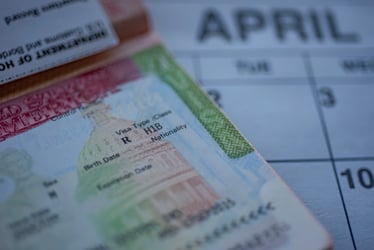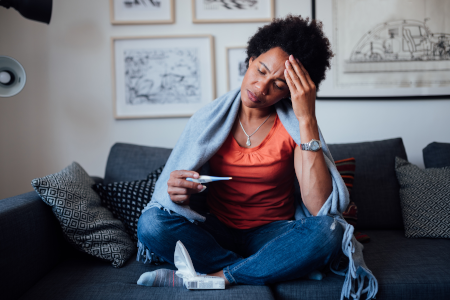Related Posts



You are about to leave Risk Strategies website and view the content of an external website.
You are leaving risk-strategies.com
By accessing this link, you will be leaving Risk Strategies website and entering a website hosted by another party. Please be advised that you will no longer be subject to, or under the protection of, the privacy and security policies of Risk Strategies website. We encourage you to read and evaluate the privacy and security policies of the site you are entering, which may be different than those of Risk Strategies.


On February 9, 2022, California Governor Gavin Newson signed a new law requiring California employers with more than 25 employees to provide 2022 COVID-19 supplemental paid sick leave (CA SPSL). The law takes effect on February 19, 2022 but is retroactive to January 1, 2022. This new law for 2022 is similar to the previous California COVID-19 supplemental paid sick leave law that expired on September 30, 2021, with two notable differences outlined below.
CA SPSL provides paid leave for an employee who is unable to work or telework for the following COVID-19 related qualifying reasons:
Employee or family member1 is subject to a quarantine or isolation period related to COVID-19 under a federal, state, or local order/guidance.
Employee or family member has been advised by a health care provider to isolate or quarantine due to COVID-19.
Employee is attending a COVID-19 vaccine appointment for themselves or a family member (including booster shots).
Employee is experiencing symptoms, or caring for a family member experiencing symptoms, related to a COVID-19 vaccine or vaccine booster that prevent the employee from being able to work or telework – limited to a maximum of three days or 24 hours, unless a health care provider verifies that vaccine side effect symptoms are continuing.
Employee or family member is experiencing symptoms of COVID-19 and seeking a medical diagnosis.
Employee is caring for a child whose school or place of care is closed or otherwise unavailable for reasons related to COVID-19 on the premises.
The employee, or a family member for whom the covered employee is providing care, tests positive for COVID-19.
The maximum amount of CA SPSL that employees can receive is 80 hours for full-time employees and a proportionate number of hours for part-time employees or those with variable schedules.
However, in a change from 2021 California supplemental COVID-19 paid sick leave law, CA SPSL provides for up to two separate 40-hour leave banks:
One leave bank of up to 40 hours is available for the qualifying reasons reflected in 1 through 6 above – employee/family member subject to quarantine/isolation order/advice, vaccine appointments and recovery from side effects, experiencing COVID-19 symptoms, and/or child’s school/place of care is closed for COVID-19 reasons.
One leave bank of up to 40 hours is available for the qualifying reason reflected in 7 above – employee or family member testing positive for COVID-19.
Employers can require an employee to submit proof of a positive COVID-19 test for themselves or a family member to take CA SPSL under the leave bank provided for a positive test. An employer may require the infected employee to take a diagnostic test on or after day five following the initial positive test and provide the results of that test. In these instances, the employer must make a COVID-19 test available at no cost to the employee.
Employers cannot require an employee to use any other paid leave provided by the employer before the employee uses CA SPSL or in lieu of CA SPSL.
Non-exempt employees must be compensated for CA SPSL based on one of the following:
Calculated in the same manner as the regular rate of pay for the workweek in which the employees take CA SPSL.
Calculated by dividing the total wages, excluding overtime premium pay, by the total non-overtime hours worked, in the full pay periods of the prior 90 days worked.
Exempt employees must be compensated for CA SPSL in the same manner as other forms of paid leave.
The maximum CA SPSL compensation is capped at $511 per day and $5,110 in the aggregate.
If an employee requests that CA SPSL be applied to a prior 2022 absence (before CA SPSL was in effect) for a qualifying reason under CA SPSL, the employer must credit CA SPSL to that absence, rather than using any other paid sick leave that was applied to the absence. If the prior 2022 absence was compensated at a lower pay rate than what CA SPSL requires, the employer must offset the employee’s pay with an amount that makes the employee whole under CA SPSL for that prior 2022 absence.
If an employee is eligible for exclusion pay under the Cal/OSHA Emergency Temporary Standard (ETS) due to a workplace COVID-19 exposure, employers cannot require an employee to first exhaust their CA SPSL. This is the second notable change from the 2021 California supplemental COVID-19 paid sick leave law, which permitted employers to require employees to use CA SPSL before having to pay exclusion pay under the Cal/OSHA ETS.
Under the Cal/OSHA ETS, employers must provide exclusion pay to in-person employees required to isolate/quarantine from their in-person work to the extent that they are unable to perform their work remotely.
Click here for Risk Strategies’ prior blog post for more information regarding the Cal/OSHA ETS.
The law takes effect on February 19, 2022 but is retroactive to January 1, 2022 and expires on September 30, 2022.
Employers are advised to review the recommended next steps below and act accordingly:
Leave policy: Prepare a revised leave policy in light of CA SPSL for 2022.
Leave tracking processes: Ensure leave tracking processes are updated, particularly since CA SPSL requires two separate banks of leave for different qualifying reasons and employers may have to process retroactive leave requests and payment offsets under CA SPSL.
Model notice: Post the CA SPSL model notice provided by the California Department of Labor or distribute it by email for remote workers.
Paystub requirement: Provide written notice of the amount of CA SPSL hours taken through the pay period either in the employee’s paystub/wage statement or in a separate notice provided on the designated pay date. If an employee has not taken any CA SPSL, then zero hours must be listed.
Local COVID-19 paid sick leave ordinances: For employers in Oakland, Long Beach and Los Angeles (City and County), be mindful of local COVID-19 supplemental paid leave regulations still in effect. Specifically, CA SPSL allows employers to credit leave provided under one of these local ordinances towards CA SPSL allotments as long as the leave was provided for the same qualifying reasons and the employee is paid in accordance with the compensation requirements under CA SPSL.
Risk Strategies will continue to monitor developments in this area and work diligently to provide our clients with the most up-to-date information.
1 Family member is defined to include a spouse, registered domestic partner, child, grandchild, parent, stepparent, grandparent or sibling.
2 Child is defined as a biological child, adopted child, foster child, stepchild, legal ward or a child to whom the employee stands in loco parentis. This definition of a child applies regardless of age or dependency status.
The contents of this article are for general informational purposes only and Risk Strategies Company makes no representation or warranty of any kind, express or implied, regarding the accuracy or completeness of any information contained herein. Any recommendations contained herein are intended to provide insight based on currently available information for consideration and should be vetted against applicable legal and business needs before application to a specific client.


